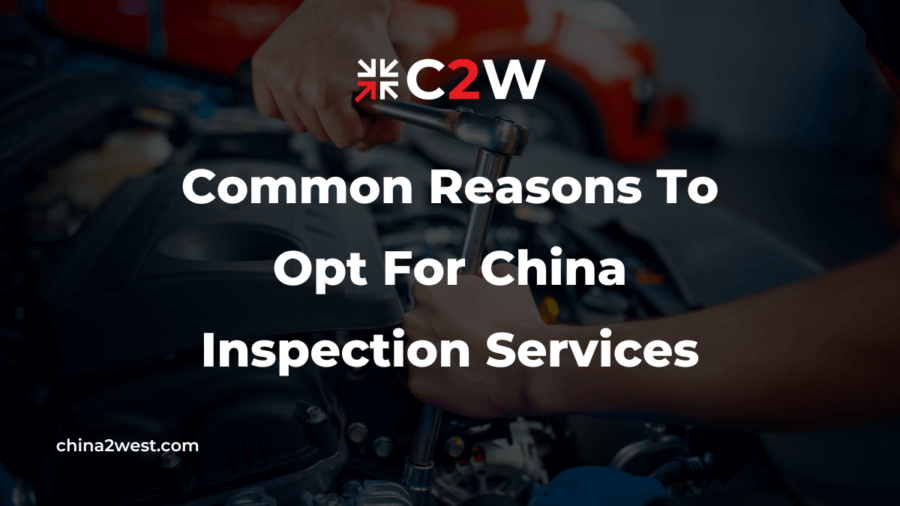In the dynamic landscape of manufacturing, ensuring product quality is paramount for sustained success and customer satisfaction. Amidst the complexities of production processes, the implementation of effective quality control measures becomes the linchpin for addressing and preventing issues during the manufacturing process. This proactive approach safeguards against defects and cultivates a reputation for reliability and excellence. In this exploration, we delve into the strategies and methodologies that underpin a robust quality control system, offering insights into how manufacturers can fortify their operations and deliver products that consistently meet or exceed customer expectations.
Understanding the Concept of Quality Control
Quality control is not just a catchphrase – it’s an intricate process pivotal to the manufacturing sector. At its core, quality control revolves around ensuring that the end products align perfectly with pre-established standards and benchmarks.
But how does it work, you ask? The entire cycle of quality control hinges on continuous monitoring, rigorous testing, and detailed analysis of the production journey. This scrutiny helps zero in on products that do not measure up to the prescribed standards. More often than not, such issues indicate a glitch or hiccup in the manufacturing process that requires immediate attention and correction.
However, quality control doesn’t stop at merely identifying these issues; it’s the key to addressing and rectifying them, too. The beauty of a sound quality control system lies in its ability to curb waste, make optimal use of resources, and enhance the overall quality of the final product.
Common Product Checks During Inspection
Product inspection is a crucial step in the manufacturing and quality control process to ensure that products meet predefined standards and specifications. Whether it’s in the automotive, electronics, or any other industry, thorough inspections help maintain product quality, safety, and compliance with regulations. The specific checks may vary depending on the nature of the product and the industry, but here are some common aspects that are often examined during inspections.
Visual Inspection
Visual inspection is often the first line of defense in product quality control. Inspectors assess the overall appearance of the product, checking for any defects, irregularities, or deviations from the standard design. This includes scrutinizing color, shape, size, and surface finish to ensure they align with the approved specifications.
Dimensional Accuracy
Precision is crucial in many industries, and dimensional accuracy is a key parameter in product inspections. Measuring critical dimensions ensures that the product’s size and shape conform to the specified tolerances. This may involve the use of calipers, gauges, or other measuring tools to verify lengths, widths, diameters, and other critical dimensions.
Functional Testing
Functional testing assesses whether the product performs its intended purpose as designed. This can involve a series of tests, such as operating mechanical components, checking electronic functionality, or running simulations to evaluate the product’s performance under normal operating conditions. Functional testing ensures that the product meets customer expectations and operates reliably.
Material Quality
Inspectors often examine the materials used in the manufacturing process to verify their quality and suitability for the intended application. This may include testing the hardness, tensile strength, or composition of materials to ensure they meet the required standards and specifications. Proper material quality is essential for the longevity and performance of the end product.
Packaging Inspection
In addition to the product itself, inspectors also scrutinize the packaging. Proper packaging is vital for protecting the product during transportation and storage. Inspectors check for correct labeling, adequate cushioning, and overall package integrity. Ensuring proper packaging contributes to preventing damage and maintaining the product’s quality until it reaches the end-user.
Addressing Manufacturing Issues through Quality Control
Quality control is like a finely tuned radar system, capable of spotting the smallest blip on the manufacturing landscape. It is the unseen hero who dives deep into the production line, detecting manufacturing faults before they morph into more serious complications. Picture this – a piece of machinery is malfunctioning, raw materials aren’t up to par, or the production process isn’t quite right. Each of these scenarios can result in product defects.
However, an efficient quality control system is like a hawk, always on the lookout for such irregularities. It swoops down the moment it spots an issue, rectifying the problem before it has the chance to spread its wings and fly. In doing so, it streamlines the entire manufacturing process, ensuring it operates like a well-oiled machine.
But it’s not just about maintaining a smooth operation. Quality control is also a cost-effective measure. Spotting and correcting issues early saves the company from potential losses and unnecessary expenses down the line. It’s a little like having a magic wand that wards off trouble before it has the chance to strike. So, while the production line busily hums along, remember the silent vigil of quality control. It’s the unseen guardian, working tirelessly behind the scenes to ensure each product that rolls off the assembly line is nothing short of perfect.
How Quality Control Help to Fix Production Issues?
Quality control plays a crucial role in identifying and fixing production issues to ensure that products meet the desired standards and specifications. Here’s how quality control helps in fixing production issues:
Early Detection of Defects
Quality control involves inspecting raw materials, components, and the production process itself. By identifying defects early in the production cycle, corrective actions can be taken before the entire batch is produced, saving time and resources.
Process Monitoring
Continuous monitoring of the production process allows quality control teams to identify deviations from established standards. By closely tracking key parameters, they can quickly address any issues that may arise during manufacturing.
Root Cause Analysis
When defects or issues are identified, quality control teams perform root cause analysis to determine the underlying reasons. This involves investigating every aspect of the production process to understand why the problem occurred. Once the root cause is identified, corrective actions can be implemented to prevent future occurrences.
Documentation and Standardization
Quality control involves creating and maintaining documentation of standard operating procedures. This helps in standardizing processes and ensures that everyone involved in production follows established guidelines, reducing the likelihood of errors.
Continuous Improvement
Quality control is not a one-time activity but an ongoing process. It promotes a culture of continuous improvement where lessons learned from previous production issues are used to enhance processes and prevent similar problems in the future.
Supplier Quality Management
Quality control extends beyond the production line to the supply chain. Ensuring that suppliers meet quality standards helps prevent issues related to substandard materials, components, or parts.
Navigating the Waves of Quality Control in China
Product inspection is a comprehensive process that involves various checks to guarantee quality, functionality, and compliance. By systematically evaluating visual aspects, dimensions, functionality, material quality, packaging, and regulatory requirements, manufacturers can ensure that their products not only meet but exceed customer expectations. Implementing effective inspection processes is a fundamental step toward delivering high-quality products to the market and maintaining a positive reputation in the industry.
With 18 years of experience in the Greater Bay Area in Southern China, China 2 West offers reliable and professional quality inspection services to make sure the products you make, and ship comply with the international quality standards you have come to expect. To learn more about how to make sure you get only the highest quality of goods from Chinese manufacturing companies or to speak with experts in quality inspection of Chinese goods and processes, feel free to contact us today and get in touch with us here at any time!




